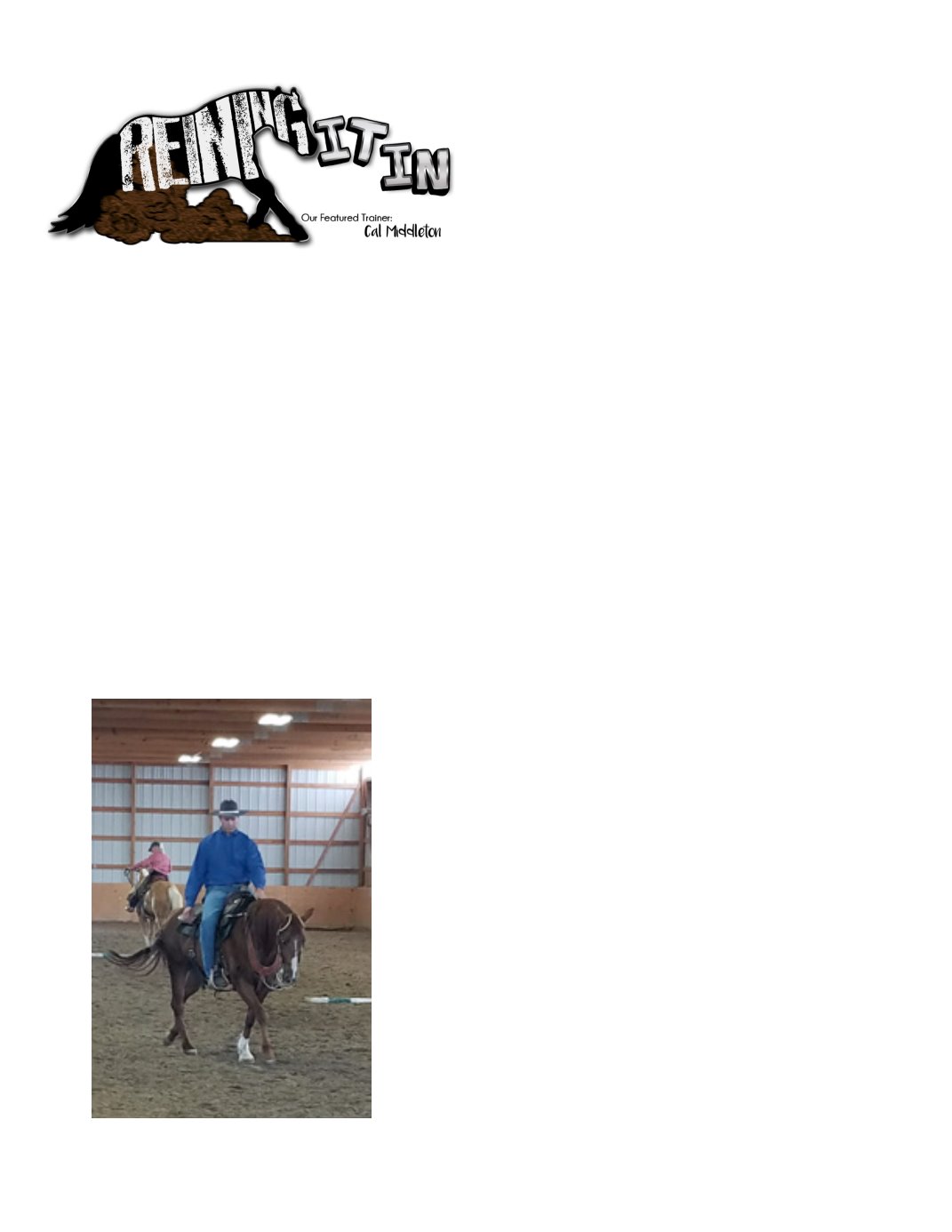

Everything Horses and Livestock Magazine ®
One Handed
There are many misconceptions about neck reining
and the idea of riding one-handed versus two hand-
ed. Once you understand the animal, you will know
that it is best to start a young horse predominantly
using two hands and continue using two hands
for years. Much later, moving to one hand can be
acceptable but is never necessary. Depending on
how it is done, this can be detrimental in the long
run for your horse.
When you progress from two hands to one, there
shouldn’t be a sudden “switch”. It should be a
lengthy, smooth transition beginning with your first
ride. If you have been using the correct teaching
techniques all along, your horse will be balanced
with you on his back, and is well on his way to
learning to be guided one-handed.
When guiding your horse with two hands, you can
touch him with the neck rein, and with the direct rein
and legs if needed. When you add pressure to the
reins to help get your horse into frame and stay in
frame, always start with one rein then the other, and
then release in the same manner. This is the way
you help your horse learn to balance himself when
you use your reins.
Your horse has to learn to follow your hands/hand.
So, if you want to ride or show one-handed, you
have to prepare your horse for one handed guid-
ance from the first day you ride him. Paradoxically,
preparing your horse for one-handed guidance
involves the continuing use of two hands throughout
the entire process.
Many people ride with two hands without ever giv-
ing thought to their possible end goal of using only
one. A common error when using two hands is to
pull and hang on the reins and bit in an attempt to
control their horse’s head position with the reins.
This leads to the horse leaning on the bit and reins
continually, and never learning to hold himself in
proper carriage and balance. Then one day when
the rider decides to “switch” to one handed use of
the reins, which can automatically loosen the reins,
the horse is totally lost and subsequently so is the
rider.
Another common error is the other extreme. For
instance, a rider decides one day to ride their
horse one-handed all the time and never goes
back to two, thinking that the horse needs to learn
one-handed riding, because that’s how a particular
competition will be judged.
We know a horse could care less about rules that
humans make up for an event that humans also
make up. If we care about our horse, he must not
be subjected to a game for which he’s not ready.
Always do what your horse needs. What your horse
needs is to be taught to balance himself and hold
himself up on his own, and to accept guidance and
to give to pressure from your hands and feet. Even-
Continued on Page 19
EHALmagazine.com |
November 2017
|
Everything Horses and Livestock®
11
















